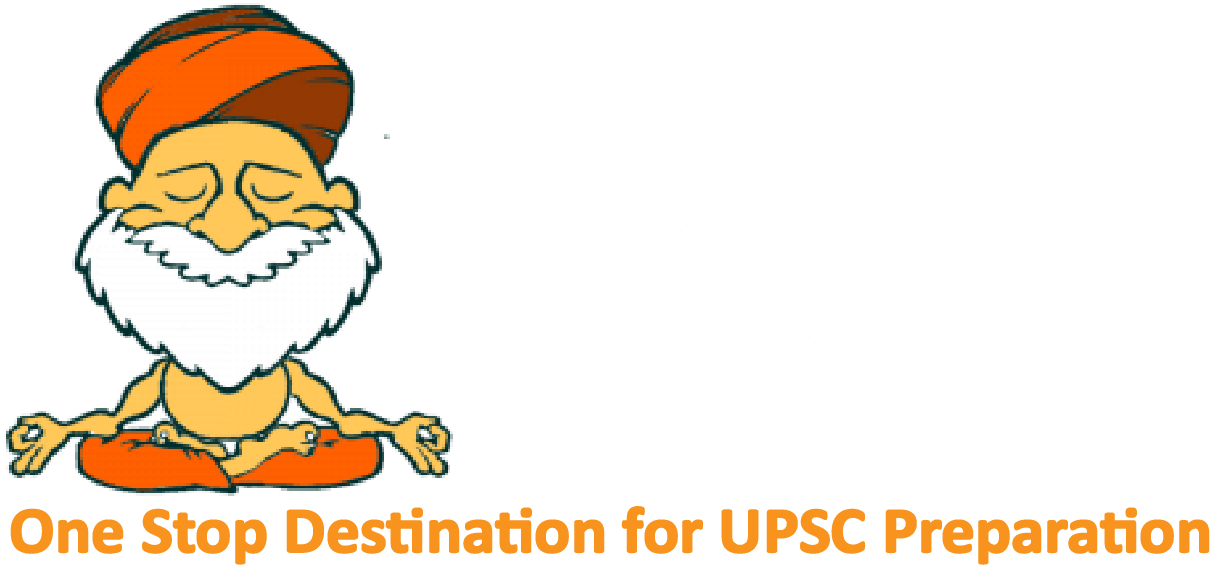For Previous Static Quiz (ARCHIVES) – CLICK HERE
DAILY STATIC QUIZ will cover all the topics of Static/Core subjects – Polity, History, Geography, Economics, Environment and Science and technology.
This is a part of our recently launched, NEW INITIATIVE IASbaba’s INTEGRATED REVISION PLAN (IRP) 2020 – Road Map for the next 100 Days! FREE INITIATIVE!
We will make sure, in the next 4 months not a single day is wasted. All your energies are channelized in the right direction. Trust us! This will make a huge difference in your results this time, provided that you follow this plan sincerely every day without fail.
Gear up and Make the Best Use of this initiative.
Do remember that, “the difference between Ordinary and EXTRA-Ordinary is PRACTICE!!”
0 of 10 questions completed
Questions:
To view Solutions, follow these instructions:
You have already completed the test before. Hence you can not start it again.
Test is loading...
You must sign in or sign up to start the test.
You have to finish following test, to start this test:
0 of 10 questions answered correctly
Your time:
Time has elapsed
You have scored 0 points out of 0 points, (0)
Consider the following statements:
Which of the statements given above is/are NOT correct?
Solution (a)
73rd Constitutional Amendment Act has added Part IX to the Constitution of India.
Hence Statement 1 is incorrect.
73rd Constitutional Amendment Act has added Eleventh Schedule to the Constitution of India.
Hence Statement 2 is correct.
Solution (a)
73rd Constitutional Amendment Act has added Part IX to the Constitution of India.
Hence Statement 1 is incorrect.
73rd Constitutional Amendment Act has added Eleventh Schedule to the Constitution of India.
Hence Statement 2 is correct.
Consider the following statements:
Which of the statements given above is/are correct?
Solution (d)
Not less than one-third (including the number of seats reserved for women belonging to the Scheduled Castes and the Scheduled Tribes) of the total number of seats to be filled by direct election in every Panchayat shall be reserved for women.
Hence Statement 1 is incorrect.
The offices of the Chairpersons in the Panchayats at the village or any other level shall be reserved for the Scheduled Castes, the Scheduled Tribes and women in such manner as the Legislature of a State may, by law, provide.
Hence Statement 2 is incorrect.
Solution (d)
Not less than one-third (including the number of seats reserved for women belonging to the Scheduled Castes and the Scheduled Tribes) of the total number of seats to be filled by direct election in every Panchayat shall be reserved for women.
Hence Statement 1 is incorrect.
The offices of the Chairpersons in the Panchayats at the village or any other level shall be reserved for the Scheduled Castes, the Scheduled Tribes and women in such manner as the Legislature of a State may, by law, provide.
Hence Statement 2 is incorrect.
Consider the following statements
Which of the statements given above is/are correct?
Solution (d)
No person shall be disqualified for being a member of Panchayat on the ground that he is less than twenty-five years of age, if he has attained the age of twenty-one years.
Hence Statement 1 is incorrect.
Subject to the provisions of any law made by the Legislature of a State, the conditions of service and tenure of office of the State Election Commissioner shall be such as the Governor may by rule determine
Hence Statement 2 is incorrect.
Solution (d)
No person shall be disqualified for being a member of Panchayat on the ground that he is less than twenty-five years of age, if he has attained the age of twenty-one years.
Hence Statement 1 is incorrect.
Subject to the provisions of any law made by the Legislature of a State, the conditions of service and tenure of office of the State Election Commissioner shall be such as the Governor may by rule determine
Hence Statement 2 is incorrect.
Consider the following statements:
Which of the statements given above is/are NOT CORRECT?
Solution (b)
Every Municipality, unless sooner dissolved under any law for the time being in force, shall continue for five years from the date appointed for its first meeting.
Hence Statement 1 is correct.
A Municipality constituted upon the dissolution of a Municipality before the expiration of its duration shall continue only for the remainder of the period for which the dissolved Municipality would have continued.
Hence Statement 2 is incorrect.
Solution (b)
Every Municipality, unless sooner dissolved under any law for the time being in force, shall continue for five years from the date appointed for its first meeting.
Hence Statement 1 is correct.
A Municipality constituted upon the dissolution of a Municipality before the expiration of its duration shall continue only for the remainder of the period for which the dissolved Municipality would have continued.
Hence Statement 2 is incorrect.
Consider the following statements:
Which of the statements given above is/are correct?
Solution (d)
The Finance Commission constituted under article 243-I shall also review the financial position of the Municipalities.
Hence Statement 1 is incorrect.
The election of a board shall be conducted before the expiry of the term of the board so as to ensure that the newly elected members of the board assume office immediately on the expiry of the term of the office of members of the outgoing board.
Hence Statement 2 is incorrect.
Solution (d)
The Finance Commission constituted under article 243-I shall also review the financial position of the Municipalities.
Hence Statement 1 is incorrect.
The election of a board shall be conducted before the expiry of the term of the board so as to ensure that the newly elected members of the board assume office immediately on the expiry of the term of the office of members of the outgoing board.
Hence Statement 2 is incorrect.
Consider the following statements:
Which of the statements given above is/are correct?
Solution (d)
The idea of establishment of 3-tier Panchayat-raj system was recommended by Balwant Rai Mehta Committee and submitted its report in November 1957.
Hence Statement 1 is incorrect.
Rajasthan was the first state to establish Panchayati Raj in 1959, in Nagaur district. Rajasthan was followed by Andhra Pradesh, which also adopted the system in 1959.
Hence Statement 2 is incorrect.
Solution (d)
The idea of establishment of 3-tier Panchayat-raj system was recommended by Balwant Rai Mehta Committee and submitted its report in November 1957.
Hence Statement 1 is incorrect.
Rajasthan was the first state to establish Panchayati Raj in 1959, in Nagaur district. Rajasthan was followed by Andhra Pradesh, which also adopted the system in 1959.
Hence Statement 2 is incorrect.
With respect to the Local Government in India, Consider the following statements?
Which of the statements given above is/are correct?
Solution (a)
33% of the seats in local bodies are reserved for women
Hence statement 1 is correct.
The local government is an independent tier in the Federal system
Hence statement 2 is incorrect
The grants in aid to Panchayats are from Consolidated Fund of State (not India).
Hence Statement 3 is incorrect.
Solution (a)
33% of the seats in local bodies are reserved for women
Hence statement 1 is correct.
The local government is an independent tier in the Federal system
Hence statement 2 is incorrect
The grants in aid to Panchayats are from Consolidated Fund of State (not India).
Hence Statement 3 is incorrect.
Which of the following statements is/are correct about Panchayat system in India?
Select the correct answer using the codes given below:
Solution (a)
The provisions of Part IX of the constitution relating to the Panchayats are not applicable to the Fifth Schedule areas. However, the Parliament may extend these provisions to such areas, subject to such exceptions and modifications as it may specify.
Hence statement 1 is correct
PESA (Provisions of the Panchayats (Extension to the Scheduled Areas) Act), 1996 is with regard to Scheduled Areas (Fifth Schedule Areas) and not Tribal areas (under Sixth Schedule).
Hence statement 2 is incorrect
Solution (a)
The provisions of Part IX of the constitution relating to the Panchayats are not applicable to the Fifth Schedule areas. However, the Parliament may extend these provisions to such areas, subject to such exceptions and modifications as it may specify.
Hence statement 1 is correct
PESA (Provisions of the Panchayats (Extension to the Scheduled Areas) Act), 1996 is with regard to Scheduled Areas (Fifth Schedule Areas) and not Tribal areas (under Sixth Schedule).
Hence statement 2 is incorrect
Which of the following DOES NOT fall under the compulsory provisions of 73rd Amendment Act, 1992?
Select the correct answer using the codes given below:
Solution (c)
Voluntary Provisions
Providing reservation of seats (both members and chairpersons) for backward classes in panchayats at any level.
Granting financial powers to the pachayats, that is, authorizing them to levy, collect and appropriate taxes, duties, tolls and fees.
Compulsory Provisions
Reservation of seats (both members and chairpersons) for SCs and STs in panchayats at all the three levels.
Hence statements 1 and 2 DOES NOT falls under Compulsory Provisions
Solution (c)
Voluntary Provisions
Providing reservation of seats (both members and chairpersons) for backward classes in panchayats at any level.
Granting financial powers to the pachayats, that is, authorizing them to levy, collect and appropriate taxes, duties, tolls and fees.
Compulsory Provisions
Reservation of seats (both members and chairpersons) for SCs and STs in panchayats at all the three levels.
Hence statements 1 and 2 DOES NOT falls under Compulsory Provisions
With reference to the urban local bodies in India, which of the following statements is/are NOT CORRECT?
Select the correct answer using the codes given below:
Solution (a)
Notified area committee is an entirely nominated body
Hence statement 1 is correct
The municipal commissioner is responsible for the implementation of the decisions taken by the council and its standing committees. Thus, he is the chief executive authority of the corporation.
Hence statement 2 is incorrect
A municipal corporation has three authorities, namely, the council, the standing committees and the commissioner.
Hence statement 3 is incorrect
Solution (a)
Notified area committee is an entirely nominated body
Hence statement 1 is correct
The municipal commissioner is responsible for the implementation of the decisions taken by the council and its standing committees. Thus, he is the chief executive authority of the corporation.
Hence statement 2 is incorrect
A municipal corporation has three authorities, namely, the council, the standing committees and the commissioner.
Hence statement 3 is incorrect


